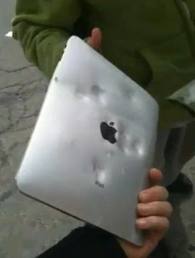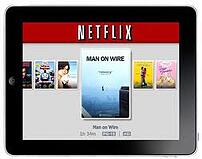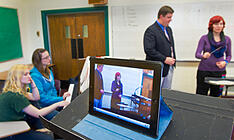
So as I’m sure you already know, BYOD for schools is in full swing whether you like it or not. Many of today’s classrooms are being flooded with mobile devices, particularly iPads, which are many students BYOD item of choice. It’s vital that your school implements a formal policy that safeguards against BYOD risks. You need to peel back all those layers and address any and all things you think could become potential issues to make sure everyone is well informed and cover your rear.
Here are some BYOD mobile device policy essentials you should defiantly make sure you cover for when all those iPads and other mobile devices hit your school wireless network.
1. Faculty, Staff and Student Agreement
Any student, faculty, or staff members whom wish to use a personally owned mobile device like an iPad in the classroom is required to read and sign the BYOD policy agreement and submit it before bringing the device on campus. Make sure they read the policy and are aware of their responsibilities, rules, and consequences beforehand to avoid any potential confusion or disputes.
2. Responsibility
You should clearly state in the policy that the users take full responsibility for his or her iPad and other mobile devices they bring on campus, and that the school is not responsible for the security of the device. Also that the user is responsible for the proper care of their personal device, including any costs of repair, replacement, or any modifications needed to use the device at school. Plainly state that the school and school district are responsible for any damage to the iPads or other personally owned mobile devices. Make sure this is clear as crystal, because if not you will have all sorts of students and parents complaining about how for example little Jimmy’s iPad getting stepped on at the playground.
3. BYOD policy violation repercussions
You can use BYOD as a way of getting students to behave and stay on task with their mobile devices. Make it aware that BYOD is not a right, it’s a privilege and violations of this BYOD policy or of any school rules involving a student’s personally owned device may result in the loss of use of the device in school and/or disciplinary action. You may even dub staff members to reserve the right to inspect and if need be, confiscate a student’s personal device if there is reason to believe that the student has violated the BYOD policy agreement.
4. iPads are learning tools
Make sure your BYOD policy helps the students understand the importance of their iPads and other mobile devices as learning tools and that alone while on school grounds. Students need to understand that their teachers are the ones who will guide them through when and how to use them. When their teacher says to put them away and turn them off they must do so or they risk losing the privilege of using them in the classroom.
5. Say no to cords
I highly doubt you have enough plug in outlets in your classroom for every student’s charger for their mobile devices. Please make sure your BYOD policy lets students know their iPads must be charged at home prior to coming to school. Otherwise, you are likely to have the chaos of a bunch of kids fighting over one plug in outlet.
6. Photo, video, and audio recordings
To protect other students and staff you should address photo, video, and audio recording in your policy. To be safe, go ahead and state that the student may not use the devices to record, transmit, or post photos or videos of a person or persons on school grounds; nor can any images or video recorded at school be transmitted or posted at any time without first getting permission from a teacher. Now obviously many teachers may encourage students to record audio from lectures to help them study later on or something of the sort. You just need to make sure students know they need to get permission from the teachers first.
So as you can see, there are quite a bit of things to consider when creating a BYOD policy. At SecurEdge, we specialize in creating school wireless networks that maintain the highest level of security for BYOD.
Having the correct BYOD policy in place to begin with is a big piece of that. If you’re school is looking for help, you can contact us here with any questions about BYOD implementation, creating BYOD policies, or if you would like a free consultation. Good luck!






